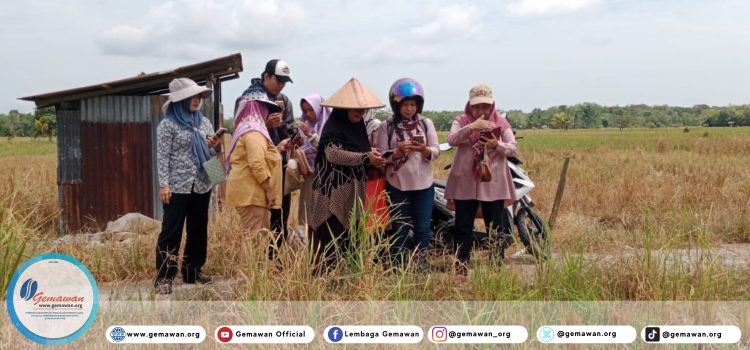
Women farmers in Sambas Regency are now charting their own land coordinates using digital technology. Through a week-long participatory mapping program organized by Gemawan, villagers not only learned how to use the Google Earth application, but also began building new awareness of the land they have managed for generations. (July 2, 2025)
The initiative targeted seven villages — Setalik, Penangkalan, Sekuduk, Gapura, Serindang, Bakau, and Parit Setia. As a result, dozens of plots — including rice fields, pineapple farms, rubber, oil palm, coffee, and dragon fruit plantations — were successfully mapped and documented by the farmers themselves.
From Mapping to Empowerment
Siti Rahmawati, known locally as Cik Wati, the local community organizer (CO) in Sambas, described the program as a step toward community self-reliance in understanding their land and its value.
“People are not just learning to record coordinates — they are beginning to recognize the value of the land they own and cultivate. This is about self-reliance, not merely technical training,” said Wati.
Beyond mapping, facilitators and villagers also identified key commodities and farming strategies unique to each village. This marks an important first step toward data-driven agricultural management rooted in local potential and knowledge.
Challenges in the Field
However, the process was not without challenges. Some villages struggled with slippery road access, limited internet connectivity, and a lack of follow-up training opportunities. To address these issues, Gemawan and local participants have outlined a series of next steps, including:
-
Training on agricultural product processing,
-
Climate adaptation strategy assistance,
-
Strengthening women-led MSMEs, and
-
Expanding access to offline mapping tools such as Avenza Maps, which allows users to map locations without an internet connection.
From Points to Plans, From Maps to Sovereignty
This initiative brings new hope. Participatory mapping is no longer seen as a purely technical exercise, but as a gateway to women farmers’ autonomy — empowering them to manage, document, and defend their land.
From points to maps, from maps to plans, and from plans to sovereignty — this is how the women of Sambas are charting not just their land, but also their future.
Author: Muhammad Daffa
